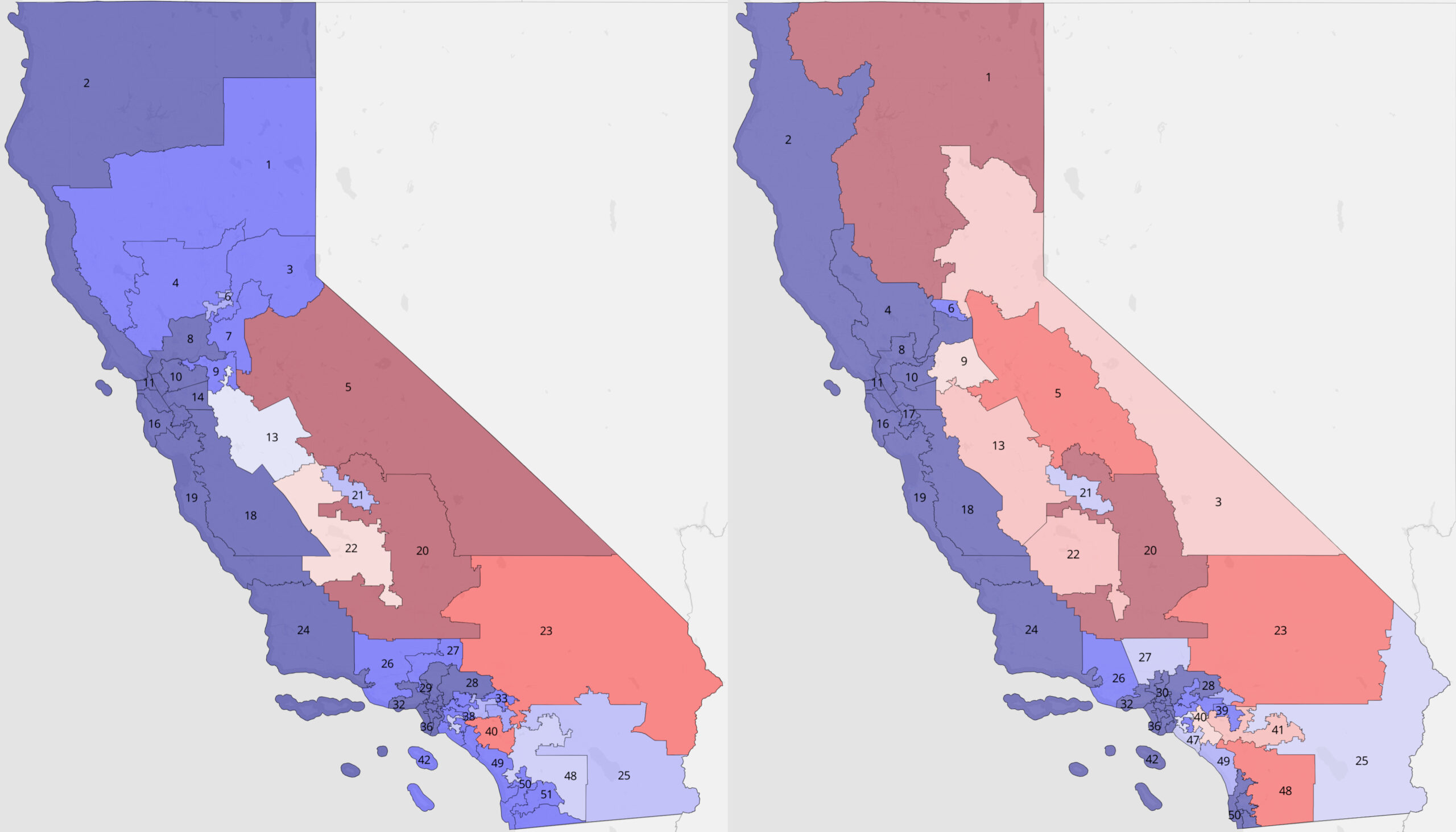By Jim Ellis — Monday, Sept. 22, 2025
Senate
 Without any incumbent losing in the 2026 election, it is possible we will see as many as a dozen new Senators come to Washington when the 120th Congress convenes. Obviously, the number will grow even higher should any incumbent fall to a challenger, and further retirements as state candidate filing deadlines begin to approach are of course possible.
Without any incumbent losing in the 2026 election, it is possible we will see as many as a dozen new Senators come to Washington when the 120th Congress convenes. Obviously, the number will grow even higher should any incumbent fall to a challenger, and further retirements as state candidate filing deadlines begin to approach are of course possible.
At this point, eight Senators have announced they will not seek re-election, but the cycle’s wild card is potentially seeing five Senators running for Governor in their respective states. This unusually high number includes four Senators who are not in-cycle, meaning they would not have to risk their current position to enter the state race.
Currently, Sens. Tommy Tuberville (R-AL), Michael Bennet (D-CO), and Marsha Blackburn (R-TN) are announced gubernatorial candidates. Two more, Sens. Alex Padilla (D-CA) and Lisa Murkowski (R-AK), have made public statements admitting they are considering entering open Governor’s races in their states. From this entire group, only Sen. Tuberville is eschewing re-election to run for Governor.
Sen. Padilla said he will wait to determine if he will launch a gubernatorial bid until the special redistricting vote scheduled for Nov. 4. Just this week, Sen. Murkowski again said she “isn’t ruling out” running for Governor of Alaska and made the point of having the “luxury” of waiting until deeper in the election cycle to make a final decision.
All of the Senators running or potentially running for Governor have or would have a strong chance of winning. This means that all but one would have the opportunity of appointing their own successor to the Senate upon election. Already speculation is running high in places like Colorado and Tennessee as to who will be the chosen replacement. Alabama voters will choose their next Senator in the 2026 regular election.
Of the 35 Senate races in the ’26 election cycle, including the two special elections in Florida and Ohio, Republicans must defend 22 of the in-cycle seats as compared to just 13 for the Democrats. Today, it appears that only three are in the toss-up category, Georgia, Michigan, and North Carolina, with the remaining 32 being safe for the incumbent party or at least leaning in its direction.
A Georgia poll released just this week (Quantus Insights; Sept. 9-12; 624 likely Georgia general election voters; online and text) projects Sen. Jon Ossoff (D) and Rep. Mike Collins (R-Jackson) locked in a 38-38 percent tie.
In the open Michigan race, Republican Mike Rogers, who lost the 2024 Senate contest by just 19,006 votes (three-tenths of a percentage point), has an unencumbered path to the Republican nomination, while the Democrats are embroiled in a three-way primary battle that won’t be decided until Aug. 4.
Recent North Carolina polling data (Change Research; Sept. 2-8; 855 likely North Carolina voters; online) finds former Gov. Roy Cooper (D) leading ex-Republican National Committee chairman Michael Whatley 48-41 percent in a race to replace retiring Sen. Thom Tillis (R) that is expected to be close through the entire campaign.
In the races involving Senators running for Governor, Sen. Tuberville to date faces no major Alabama Republican primary opposition in his open race. Incumbent Gov. Kay Ivey (R) is ineligible to seek a third term. A Democratic nominee will have a difficult time overcoming Sen. Tuberville in the general election. The party hopes to recruit former Sen. Doug Jones into the race, but he lost to Tuberville 60-40 percent in the 2020 Senate campaign. Therefore, Sen. Tuberville appears as a lock to win the Governorship next year.
Colorado Sen. Bennet would have little trouble in his state’s open Governor’s election as incumbent Jared Polis (D) is also term-limited in 2026. In the Democratic primary, Attorney General Phil Weiser remains in the race, and he is Sen. Bennet’s strongest potential opponent. The only published poll of this campaign came from the Global Strategy Group in June (June 9-11; 600 likely Colorado Democratic primary voters; live interview) and posted Sen. Bennet to a strong 53-22 percent advantage over Weiser.
Tennessee Sen. Blackburn faces GOP primary opposition in the person of Rep. John Rose (R-Cookeville). The latest poll comes from Quantus Insights (Aug. 5-7; 600 registered Tennessee voters; online & text) and posts Sen. Blackburn to a large 35-6 percent lead for the party nomination.
California Sen. Padilla would be a very formidable candidate, and likely the favorite, in the open Governor’s race to replace incumbent Gavin Newsom (D). A large jungle primary field awaits with no candidate so far even reaching 20 percent in any poll. The ostensible leader by a small percentage is former Rep. Katie Porter (D), but a Padilla entry would almost certainly allow him to advance into the general election. There, he would be a big favorite even in a two-way Democratic November campaign.
Sen. Murkowski, on the other hand, should she run for Governor, could face major general election opposition. Waiting in the wings is Democratic former at-large Rep. Mary Peltola. Even though she lost a close 2024 general election, Peltola remains a popular figure and would clearly be the Democrats’ best option to convert the Governor’s position away from the Republicans. As in other discussed situations, incumbent Mike Dunleavy (R) is ineligible to seek re-election.
The addition of multiple Senators running as candidates for Governor across the nation changes the 2026 Senate election cycle. Therefore, it is probable we will see several more freshman Senators in 2027 than the regular election will produce.





